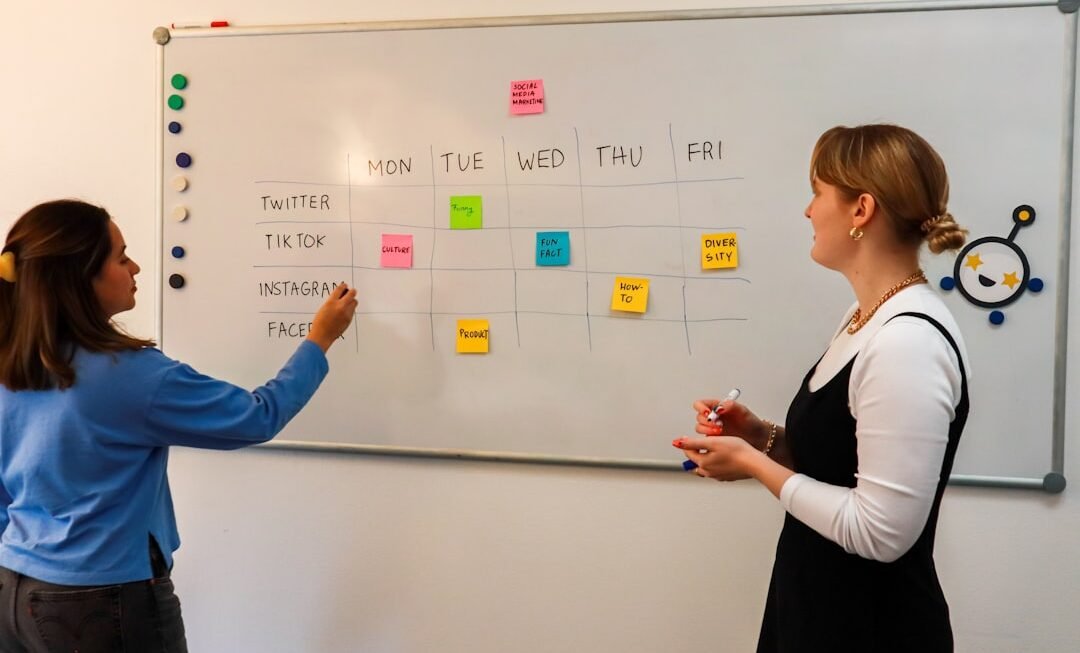In recent years, the educational landscape has undergone a significant transformation, largely driven by technological advancements. Immersive learning experiences, characterized by their ability to engage students through interactive and experiential methods, have gained traction in classrooms around the globe. These experiences often utilize virtual reality (VR), augmented reality (AR), and mixed reality (MR) technologies to create environments where learners can explore complex concepts in a hands-on manner.
For instance, medical students can practice surgical techniques in a simulated operating room, while history students can walk through ancient civilizations, experiencing the past in a way that textbooks alone cannot provide. The rise of immersive learning is not merely a trend; it reflects a deeper understanding of how people learn best. Research indicates that experiential learning enhances retention and comprehension, as students are more likely to remember information they have actively engaged with.
This shift towards immersive experiences is also fueled by the increasing availability of affordable technology, making it easier for educational institutions to adopt these innovative methods. As schools and universities recognize the potential of immersive learning, they are beginning to integrate these technologies into their curricula, paving the way for a more engaging and effective educational experience.
Key Takeaways
- Immersive learning experiences are on the rise, offering students a more engaging and interactive way to learn.
- Artificial intelligence is playing a significant role in revolutionizing education, from personalized learning to virtual classroom interactions.
- Virtual classrooms are a new frontier in learning, providing opportunities for students to connect and learn in a digital environment.
- Immersive learning experiences offer benefits such as increased student engagement, improved retention, and a deeper understanding of the material.
- AI is revolutionizing education by providing personalized learning experiences, automating administrative tasks, and offering insights into student performance.
The Role of Artificial Intelligence in Education
Personalized Learning through Data Analysis
AI technologies can analyze vast amounts of data to provide insights into student performance, enabling educators to tailor their approaches to meet individual needs. For example, AI-driven platforms can identify areas where students struggle and suggest personalized resources or interventions, ensuring that no learner is left behind.
Intelligent Content Delivery
Moreover, AI is not limited to assessment and analytics; it also plays a crucial role in content delivery. Intelligent tutoring systems can provide real-time feedback and support to students, simulating one-on-one interactions with a teacher. These systems can adapt to the learner’s pace and style, offering explanations and exercises that align with their unique learning journey.
Creating Dynamic Learning Environments
As AI continues to evolve, its integration into educational settings promises to create more dynamic and responsive learning environments that cater to diverse student populations.
Virtual Classrooms: A New Frontier in Learning
Virtual classrooms represent a groundbreaking shift in how education is delivered, transcending geographical boundaries and traditional classroom settings. With the advent of online learning platforms and video conferencing tools, students can now participate in classes from anywhere in the world. This flexibility not only accommodates diverse learning styles but also opens up opportunities for collaboration among students from different cultures and backgrounds.
For instance, a student in New York can engage in a group project with peers in Tokyo, fostering global perspectives and cross-cultural communication skills. The effectiveness of virtual classrooms is further enhanced by the incorporation of immersive technologies. Educators can create engaging lessons that utilize VR simulations or AR applications, allowing students to interact with content in ways that traditional methods cannot achieve.
For example, a science teacher might use VR to take students on a virtual field trip to the Amazon rainforest, where they can observe ecosystems firsthand and conduct experiments in real-time. This innovative approach not only enriches the learning experience but also prepares students for a future where digital literacy is paramount.
The Benefits of Immersive Learning Experiences
Immersive learning experiences offer a multitude of benefits that extend beyond mere engagement. One of the most significant advantages is the enhancement of critical thinking skills. When students are placed in realistic scenarios—such as solving complex problems in a virtual environment—they are encouraged to think critically and make decisions based on evidence and analysis.
This experiential approach fosters deeper understanding and retention of knowledge, as learners are not just passive recipients of information but active participants in their education. Additionally, immersive learning experiences cater to various learning styles, making education more inclusive. Visual learners benefit from rich graphics and simulations, while kinesthetic learners thrive in hands-on activities that allow them to manipulate objects within a virtual space.
Furthermore, these experiences often promote collaboration among students, as many immersive platforms encourage teamwork and communication. By working together to solve challenges or complete tasks, students develop essential social skills that are vital for success in both academic and professional settings.
How AI is Revolutionizing Education
The revolution brought about by artificial intelligence in education is profound and multifaceted. One of the most notable changes is the ability to automate administrative tasks, freeing educators to focus on teaching rather than paperwork. AI systems can handle grading, scheduling, and even communication with parents, streamlining processes that often consume valuable time.
This efficiency allows teachers to dedicate more energy to developing engaging lesson plans and providing personalized support to their students. Moreover, AI’s predictive analytics capabilities are transforming how institutions approach curriculum development and resource allocation. By analyzing trends in student performance data, schools can identify which subjects or topics require additional focus or resources.
This proactive approach enables educators to adapt their teaching strategies based on real-time feedback rather than relying solely on historical data or standardized test scores. As a result, AI is not just enhancing individual learning experiences; it is also reshaping the educational landscape at an institutional level.
Creating Engaging and Interactive Virtual Classrooms
The creation of engaging and interactive virtual classrooms requires careful consideration of both technology and pedagogy. Educators must leverage various tools and platforms that facilitate interaction among students while also providing rich content delivery. For instance, incorporating gamification elements—such as quizzes, leaderboards, and rewards—can motivate students to participate actively in their learning journey.
By turning lessons into interactive challenges, educators can foster a sense of competition and camaraderie among learners. Additionally, the use of multimedia resources enhances the virtual classroom experience by catering to different learning preferences. Videos, podcasts, interactive simulations, and discussion forums can all be integrated into lessons to create a dynamic learning environment.
Educators should also prioritize fostering a sense of community within virtual classrooms by encouraging collaboration through group projects or peer-to-peer feedback sessions. By creating an inclusive atmosphere where students feel comfortable sharing ideas and asking questions, educators can significantly enhance engagement levels.
The Future of Education: AI and Virtual Classrooms
As we look toward the future of education, the integration of AI and virtual classrooms is poised to redefine how knowledge is imparted and acquired. The potential for personalized learning experiences will continue to expand as AI algorithms become more sophisticated in understanding individual student needs. This evolution will enable educators to create tailored curricula that adapt in real-time based on student performance and engagement levels.
Furthermore, the combination of AI with immersive technologies will likely lead to even more innovative educational practices. Imagine virtual classrooms where AI-driven avatars serve as teaching assistants or where students can engage with holographic representations of historical figures during lessons on world history. Such advancements could make learning more engaging and relevant while also preparing students for an increasingly digital world.
Overcoming Challenges in Implementing Immersive Learning Experiences
Despite the numerous benefits associated with immersive learning experiences, several challenges must be addressed for successful implementation. One significant hurdle is the disparity in access to technology among students from different socioeconomic backgrounds. While some learners may have access to high-quality devices and reliable internet connections at home, others may struggle with inadequate resources.
Educational institutions must work towards bridging this digital divide by providing necessary tools or creating partnerships with technology companies. Another challenge lies in training educators to effectively utilize immersive technologies within their teaching practices. Many teachers may feel overwhelmed by the rapid pace of technological change or lack confidence in their ability to integrate new tools into their lessons.
Professional development programs focused on immersive learning strategies are essential for equipping educators with the skills they need to harness these technologies effectively. By investing in teacher training and support, schools can ensure that immersive learning experiences are implemented successfully.
Personalized Learning with AI in Virtual Classrooms
Personalized learning has emerged as a key focus within modern education, driven largely by advancements in artificial intelligence. In virtual classrooms, AI can analyze individual student data—such as learning pace, preferences, and performance metrics—to create customized learning pathways tailored specifically for each learner. This level of personalization allows students to progress at their own speed while receiving targeted support when needed.
For example, an AI-powered platform might identify that a student struggles with specific math concepts while excelling in reading comprehension. In response, it could provide additional resources—such as interactive exercises or video tutorials—focused on those challenging math topics while allowing the student to advance through reading materials at a faster pace. This adaptive approach not only enhances student engagement but also fosters a sense of ownership over their learning journey.
The Impact of Immersive Learning on Student Engagement and Retention
The impact of immersive learning experiences on student engagement cannot be overstated. Traditional educational methods often struggle to capture the attention of today’s digitally-savvy learners who are accustomed to interactive content in their daily lives. Immersive technologies bridge this gap by providing captivating environments that stimulate curiosity and encourage exploration.
Studies have shown that students who participate in immersive learning experiences demonstrate higher levels of motivation and enthusiasm for their studies compared to those who rely solely on conventional teaching methods. Retention rates also see significant improvement when students engage with content through immersive experiences. The hands-on nature of these activities allows learners to connect theoretical knowledge with practical application, reinforcing their understanding of complex concepts.
For instance, a biology student who participates in a virtual dissection may retain information about anatomy far better than if they had simply read about it in a textbook. As educational institutions continue to embrace immersive learning strategies, they are likely to witness not only increased engagement but also improved academic outcomes.
Ethical Considerations in AI-Powered Virtual Classrooms
As artificial intelligence becomes increasingly integrated into virtual classrooms, ethical considerations must be at the forefront of discussions surrounding its implementation. One primary concern revolves around data privacy; educational institutions must ensure that student data is collected responsibly and securely stored to protect against breaches or misuse. Transparency regarding how data is used is essential for building trust between educators, students, and parents.
Additionally, there is the potential for bias within AI algorithms that could inadvertently disadvantage certain groups of students based on race, gender, or socioeconomic status. It is crucial for developers and educators alike to critically assess AI systems for fairness and inclusivity before deployment in educational settings. By prioritizing ethical considerations alongside technological advancements, stakeholders can work towards creating equitable virtual classrooms that benefit all learners while minimizing risks associated with AI integration.












